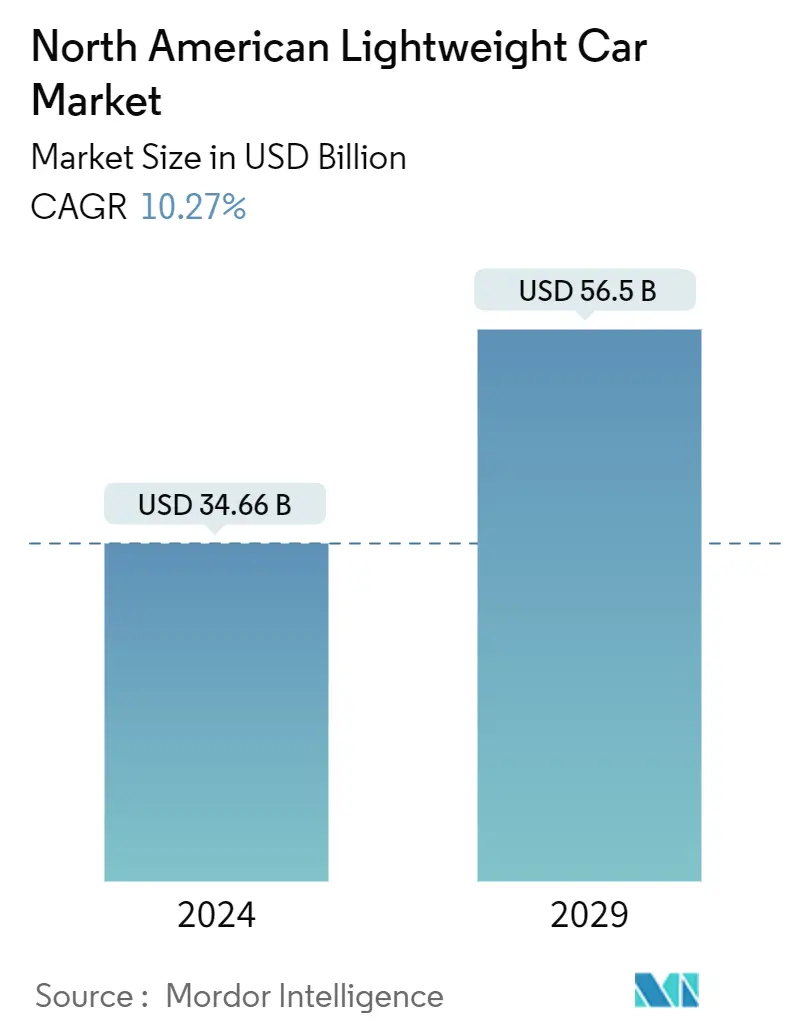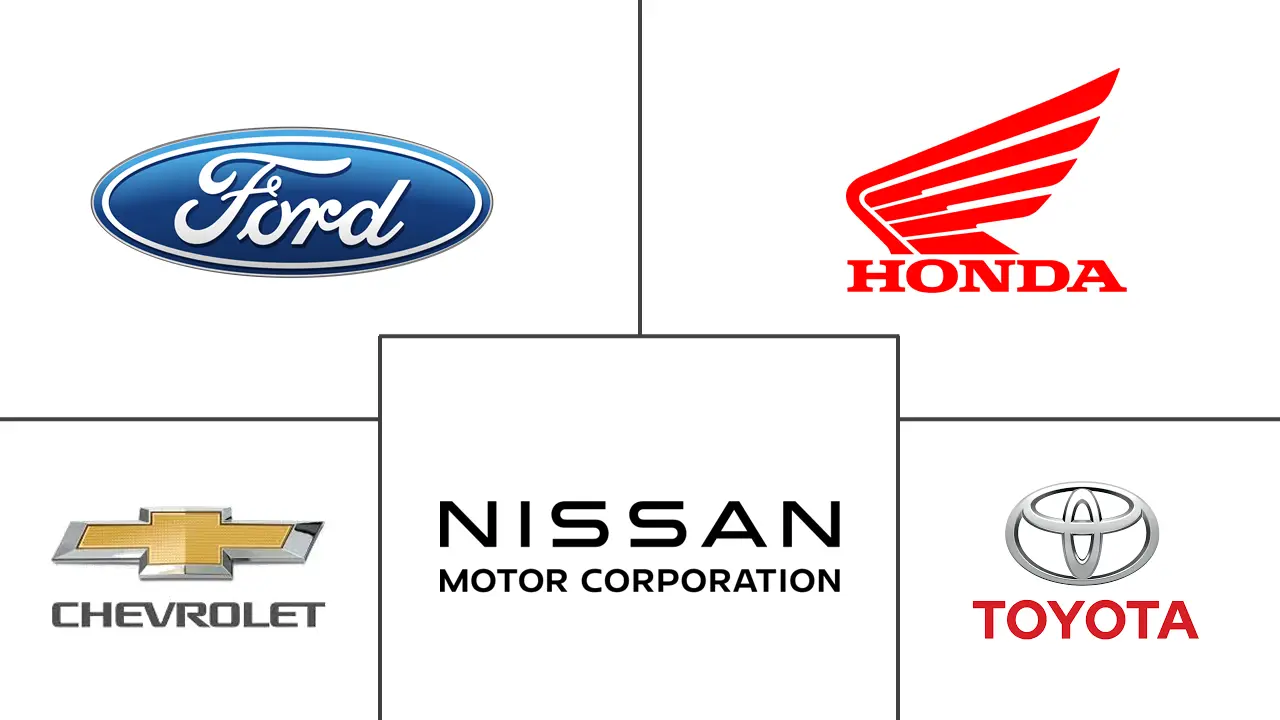Market Size of North American Lightweight Car Industry

| Study Period | 2019-2029 |
| Base Year For Estimation | 2023 |
| Market Size (2024) | USD 34.66 Billion |
| Market Size (2029) | USD 56.5 Billion |
| CAGR (2024 - 2029) | 10.27 % |
| Market Concentration | Medium |
Major Players
*Disclaimer: Major Players sorted in no particular order |
Need a report that reflects how COVID-19 has impacted this market and its growth?
North American Lightweight Car Market Analysis
The North American Lightweight Car Market size is estimated at USD 34.66 billion in 2024, and is expected to reach USD 56.5 billion by 2029, growing at a CAGR of 10.27% during the forecast period (2024-2029).
Over the long term, the market for lightweight cars in North America is expected to be driven by regulatory authorities pushing for fuel efficiency. The lightweight car market in North America is becoming stringent to serve the strict fuel economy standards of the United States Corporate Average Fuel Economy (CAFE) requirements, which are also being adopted by Canada and Mexico.
- According to the Energy Information Administration, the carbon dioxide emissions from energy consumption in the transportation sector in the United States touched 1,836 million metric tons of carbon dioxide in 2022 compared to 1,809 million metric tons in 2021, recording a Y-o-Y growth of 1.4% between 2021 and 2022.
Lightweighting is becoming a major trend in many industrial sectors, including not only transportation but also civil infrastructure, manufacturing, and clean energy technologies. In contrast to popular belief, lightweight components include aspects such as structural efficiency, economic and environmental impact, and other aspects involving structural efficiency. In industry, reducing a product's weight not only consumes fewer resources for manufacturing but also requires less transportation energy, preserving natural resources and reducing harmful pollution.
The ideal materials for lightweight cars in this market include aluminum, high-strength steel, and magnesium. In the luxury segment, carbon fiber cars, like those used in BMW, are no longer expensive and are increasingly being used in mass-market car production. North American economies are focusing on reducing the cost of materials through concentrated research to drive the lightweight car market's growth.
With the emergence of electric vehicles and an increasing ban on diesel vehicles' production of gasoline and diesel engines, the fossil fuel-run automotive industry's growth may face negative growth. However, lightweight car materials will remain a driving factor due to their application in an alternative fuel vehicle market.
